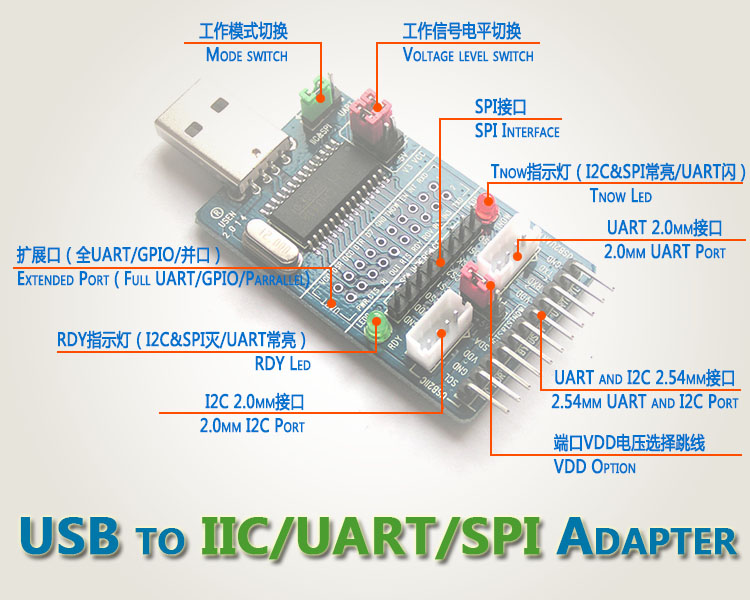Note: Library added in post #7.
Hello, I have found a possible alternative to the FT311D chip, which may be able to operate with the SPI port to be a alternative to the USB Serial converter (CH341 seems to be cheaper).
This CH341 has an interface JAR file, and the functions are described in a pdf file.
In addition the source code of a sample app is provided.
(P.S. Source file citation removed on 10/27/2019)
How can I declare these functions?
(Unfortunately when creating a USB device, it is necessary to buy a VID / PID address, and for a small project it becomes unviable, so the need to find a faster interface alternative than the serial port with USB adapter)
Thank you.
Ref: Accesing third party Jar with #Additionaljar and JavaObject - Picasso
Hello, I have found a possible alternative to the FT311D chip, which may be able to operate with the SPI port to be a alternative to the USB Serial converter (CH341 seems to be cheaper).
The CH341 is a USB bus adapter that provides asynchronous UART, parallel port, and common 2-wire and 4-wire synchronous serial interfaces via the USB bus. In the parallel port mode, an EPP/MEM 8-bit parallel interface is provided, and the commonly used synchronous serial interface mainly includes a 2-wire IIC, a 4-wire SPI, and the like.
This document mainly introduces the Java Driver Library of CH341USB to EPP, MEM, IIC, SPI mode (hereinafter referred to as CH341PAR), and how to use the APK to operate CH341PAR for data communication under Android. The driver is based on the Android USB Host protocol, and the user can call the provided interface API to communicate with the Android USB Host.
This CH341 has an interface JAR file, and the functions are described in a pdf file.
- int CH341SystemInit()
- int[][] CH341getPIDVID()
- boolean CH341GetInput(int[] iStatus)
- boolean CH341SetOutput(long iEnable, long iSetDirOut, long iSetDataOut)
- boolean CH341Set_D5_D0(long iSetDirOut, long iSetDataOut)
- boolean CH341SetTimeOut(int WriteTimeOut, int ReadTimeOut)
- boolean CH341StreamSPI4(char chipSelect, long iLength, byte[] ioBuffer)
In addition the source code of a sample app is provided.
(P.S. Source file citation removed on 10/27/2019)
How can I declare these functions?
(Unfortunately when creating a USB device, it is necessary to buy a VID / PID address, and for a small project it becomes unviable, so the need to find a faster interface alternative than the serial port with USB adapter)
Thank you.
Ref: Accesing third party Jar with #Additionaljar and JavaObject - Picasso
Last edited:

